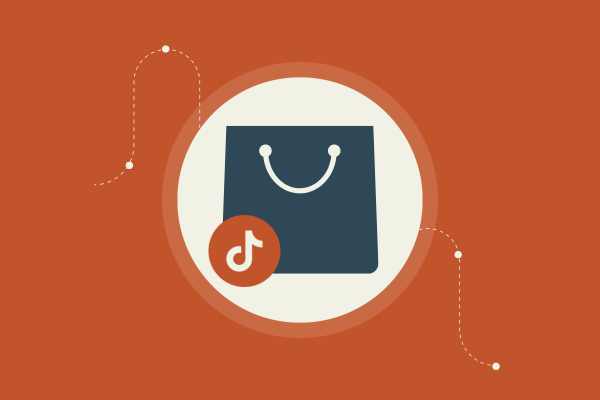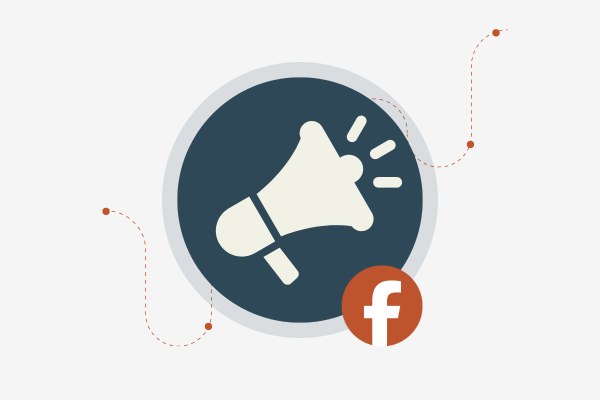What Does a Low Operating Margin Mean for Your eCommerce Business? Profit Killer or Growth Killer?
A low operating margin in your eCommerce business can feel like trying to run a marathon with your shoelaces tied. When your operating margin is low, it means your business isn't making enough money from its core activities. This can make it hard to cover expenses, invest in growth, or even stay afloat.
You're not alone in facing this challenge. Many online businesses struggle with slim margins. The key is understanding why it happens and what you can do about it. By figuring out which expenses are eating into your profits, you can start turning things around.
Getting your operating margin to a healthy level isn't just about cutting costs. It's about making smarter business decisions that drive growth. You need to navigate challenges, optimize your expenses, and focus on strategies that give your business the edge it needs to succeed.
Key Takeaways
Low margins mean your core business isn't profitable enough.
Identify expense areas hurting your profit.
Strategize smarter business decisions for growth.
Decoding Operating Margin
You want to know how your eCommerce business ticks, right? Operating margin is key. It's like the heartbeat of your business. It tells you how efficiently your operations are running. Let's unpack it with two important points.
What's Operating Margin Anyway?
Think of operating margin like a report card. It shows how much of your sales is profit after removing operating expenses. This means everything from rent to salaries.
Here's the math: Operating Margin = (Operating Profit / Net Sales) x 100. Operating profit is what you have left after paying the bills. If you earned $100 and operating costs were $80, your margin is 20%. This percentage shows how healthy your business is. High percentage? You're doing well. Low margin? Time to tighten the ship.
Core Components of Operating Margin
To really get it, break down the components. Net sales is your total revenue from selling products. It's big and bold. Next, you've got your operating expenses. These are the costs that keep your business wheels turning—rent, utilities, marketing.
What's left? That's your operating profit. It's the juicy part of the sale. A healthy margin shows your business is effective. Slim margins? You might need to cut some fat.
Keep an eye on costs. Streamline wherever you can. Boost that margin! It's all about squeezing the most profit out of those sales.
Impact of Low Operating Margin
A low operating margin can shake the foundations of your eCommerce business. It signals deeper issues that could affect growth and stability. Keep an eye on demand and how competitors are faring.
Signals From the Market
A slim operating margin might be a red flag. It suggests you're spending too much or not charging enough. In a crowded market, having less profit makes competing harder.
When margins shrink, it can mean your financial health is taking a hit. Surviving in such a scenario demands precision. You have to cut costs or boost prices without hurting demand.
The market loves efficiency. If you can't keep up, your eCommerce profitability might fall short, making you seem less attractive to investors or lenders. They look for stability, and a low margin screams uncertainty.
Strain on Business Growth
Low margins put the brakes on expansion. When cash is tight, scaling your operations might seem impossible. New products? Forget about it. Lower profits limit your ability to invest back into the business.
Growth demands resources—money, time, and energy. When margins are low, every dollar you earn is already spoken for. This limits your ability to fight off competition or capture new demand.
You end up stuck in survival mode, fighting to keep things afloat instead of steering toward future opportunities. Your focus shifts to keeping the lights on, not bold new ventures. That’s a tough spot to be in when you’re aiming for sustainability and long-term growth.
Expenses Eating Your Profits
Your profits are like a tasty pizza, but unwanted expenses are sneakily taking slices away. Understanding where these expenses come from and finding ways to fix them is key.
The Culprits Behind Costs
In any eCommerce business, costs can creep in from different areas. One major area to watch is your cost of goods sold (COGS). This is what you spend to produce or buy your products. High COGS can make your margins shrink. Then there's operational costs like salaries, rent, and utilities. These are your day-to-day expenses. Keep an eye on overhead costs too. Even small fees can snowball over time.
You need to identify these culprits plotting against your profits.
Managing Your COGS
Your COGS can make or break your profit margins. Think of them like the weight in a backpack—too much can slow you down.
First, get those bulk discounts when you buy in larger quantities. Reach out to your suppliers and negotiate better terms.
Track every penny spent on production. Are there cheaper materials that don’t compromise quality? Consider switching suppliers if necessary. Keep your inventory lean. Excess stock means more money tied up instead of making you money.
Manage these costs like a hawk, and watch your profits soar.
Trimming Operational Expenses
Operational expenses are like leaks in a boat. Small, but risky. Start cutting these costs by examining your spending habits closely. Subscription services you don’t need? Cut them. Try automating repetitive tasks to save on manpower.
Energy bills too high? Look into efficient equipment. Remote work could reduce the need for office space. Even renegotiating rent can save your business thousands. Regularly review expenses to catch new potential cuts.
By keeping operational expenses under control, you keep more cash in your pocket.
Navigating Ecommerce Challenges
Ecommerce is fierce. You’ve got competitors on all sides, high customer expectations, and the endless quest to lower ad costs. It's like a constant wrestling match with your margins at stake. There are key challenges you need to focus on to stay ahead and keep your business thriving.
Race Against Competitors
In ecommerce, everyone is racing for the same dollar. Competitors are many, and they’re not sleeping. They’re reducing their costs, trying new promotions, and targeting your customers.
To keep up, you need to watch the trends closely. Keep your product lineup fresh and appealing.
Analyze what your competitors are doing right. Offer something extra—like better customer service or faster shipping.
Consider niche marketing ways to focus on a specific audience and stand tall in crowded markets.
Customer Expectations vs. Profitability
Here’s the deal: Customers want more for less.
Free shipping, easy returns, the best prices—these are the expectations. But what about your profitability? Striking a balance is the game.
Focus on customer satisfaction as it leads to repeat business and positive word-of-mouth.
Think about bundling products to offer value while maintaining margins. Improve the user experience on your website. Make shopping simple and enjoyable.
This way, you can boost both sales and margins.
Ads Spending and Customer Acquisition Cost
Your ad spend is crucial. We all know that getting new customers isn't cheap.
But watch out! The cost can eat into your margins if you’re not careful.
Keep track of your customer acquisition cost and adjust your campaigns accordingly.
Watch your return on ad spend (ROAS). If ads aren't bringing in more than they cost, it’s time to pivot. Experiment with different platforms and ad strategies.
The goal isn’t to spend less but to spend smarter.
By optimizing these areas, your ecommerce business can thrive in a competitive landscape.
Strategies to Improve Operating Margins
Boosting your eCommerce business's operating margins isn't rocket science. You just need a few killer strategies. We're talking smart pricing, using automation, and optimizing sales channels. Let's get into it and maximize those profits!
Smart Pricing Strategies
Pricing isn't just about sticking a number on a tag. It’s all about strategy. First, know your costs down to the last penny, so you never price yourself out of profit.
Use dynamic pricing—adjust prices based on market demand, competition, or inventory levels.
Consider offering tiered pricing. This gives your customers options, leading them to spend more. A/B test different pricing models. Find out what gets people clicking "buy" more often. Above all, always keep an eye on the competition. If their prices drop, yours might need to as well. Stay agile and ready to tweak prices to keep it competitive.
Leveraging Automation for Efficiency
Automation is your secret weapon to cut costs and save time. Imagine tasks running smoothly even when you're sleeping.
Automate inventory management. This helps prevent stockouts and overstock. Auto-generate invoices and receipts to speed up order processing.
Automate your marketing tasks too. Email campaigns, social media posts, and ad placements can be set to run automatically. Use chatbots for customer service. They handle FAQs, freeing up your staff for more complex issues.
The more you automate, the more efficient your business becomes. And efficiency translates to a nice, fat increase in your profit margins.
Optimizing Sales Channels and Conversion Rates
Use multi-channel selling. Don't just rely on your website. Get on Amazon, eBay, or any place your customers shop. More channels mean more opportunities.
Track where each sale is coming from and double down on what's working.
Boost conversion rates by simplifying your checkout process. Reduce the steps, eliminate any friction. No one likes clicking through ten pages to make a purchase. Use high-quality images and clear product descriptions. They’re essential for selling online since they replace the in-store experience. Lastly, leverage customer reviews. They're your free salespeople, boosting trust and sales.
Implement these strategies, and watch your operating margins grow!
KPIs and Business Decisions
Crafting smart business decisions focuses on understanding key performance indicators (KPIs) that guide your eCommerce strategies. Monitoring financial metrics and making choices based on data can boost your business's health.
Key Financial Metrics to Monitor
You gotta keep an eye on those numbers! Profit margins, sales volume, and other financial metrics are crucial.
Profit margin shows how much you're actually making after costs. If it's low, you might need to rethink pricing or cut expenses.
Sales volume gives you insight into customer demand. Are people buying what you're selling? More sales can mean more profit, but they need to be managed with the right costs.
Tracking these can be tricky, but they’re the heartbeat of your business. Accurate bookkeeping helps you stay on top. Use it to compare against industry benchmarks. This tells you if you're ahead of the game or need a few tweaks to catch up.
Making Data-Driven Decisions
Data-driven decisions are your secret weapon. By using current data, you make choices that aren't just guesses. They're informed moves that steer your business toward success. You're not flying blind.
Analyze patterns from your KPIs. Are certain products flying off the shelves? Double down on what's working. Notice a dip in sales? Dig in deep to find out why. Maybe the competition slashed prices.
Apply what you learn to refine your strategies. Use accounting tools to forecast sales and plan expenses. Let metrics guide your next step. Smart decisions equal less stress and more success. Keep tweaking and adjusting, and watch your business grow.
Building Towards a Healthy Ecommerce Profit Margin
Boosting your eCommerce profit margins takes a mix of smart strategies and understanding your numbers. Focus on knowing market standards and improving key metrics like average order value (AOV) and customer lifetime value. These tactics lead to long-term profitability.
Understanding Market Benchmarks
Knowing where your business stands compared to others is crucial. An average profit margin in eCommerce usually ranges from 5% to 30%. Many businesses aim for a net profit margin of around 10% or more for a healthy bottom line.
Use a profit margin calculator to measure where you stand. This tool helps you see your financial position fast. Check benchmarks regularly to know if you’re ahead or trailing. Sites like Omniconvert's eCommerce benchmark can offer insights into industry standards. Staying informed helps you make smarter decisions to improve your margins.
Calculating and Increasing AOV
Average Order Value (AOV) matters. It’s the average amount customers spend per transaction. Raising your AOV can dramatically boost your profit margin.
To grow this number, you can try upselling or bundling products.
Upselling means encouraging customers to buy more expensive items. Bundling offers a group of products at a discount. Both strategies get customers to spend more each time. Using tools like a break-even analysis can show you how changes in AOV affect profitability. A higher AOV directly impacts your bottom line and can shift a low ecommerce profit margin into a healthier zone.
Focusing on Customer Lifetime Value
Customer Lifetime Value (CLV) is all about how much profit a customer brings to your business over time. The longer they stay and spend money, the better for your margins.
Focus on quality customer service and personalized experiences. Email marketing and loyalty programs are great ways to retain customers. They build relationships and encourage repeat business.
Analyzing CLV helps you understand where to invest in customer acquisition and retention. Keeping existing customers is often cheaper than finding new ones, and improving CLV leads to a stronger, more sustainable profit margin.







